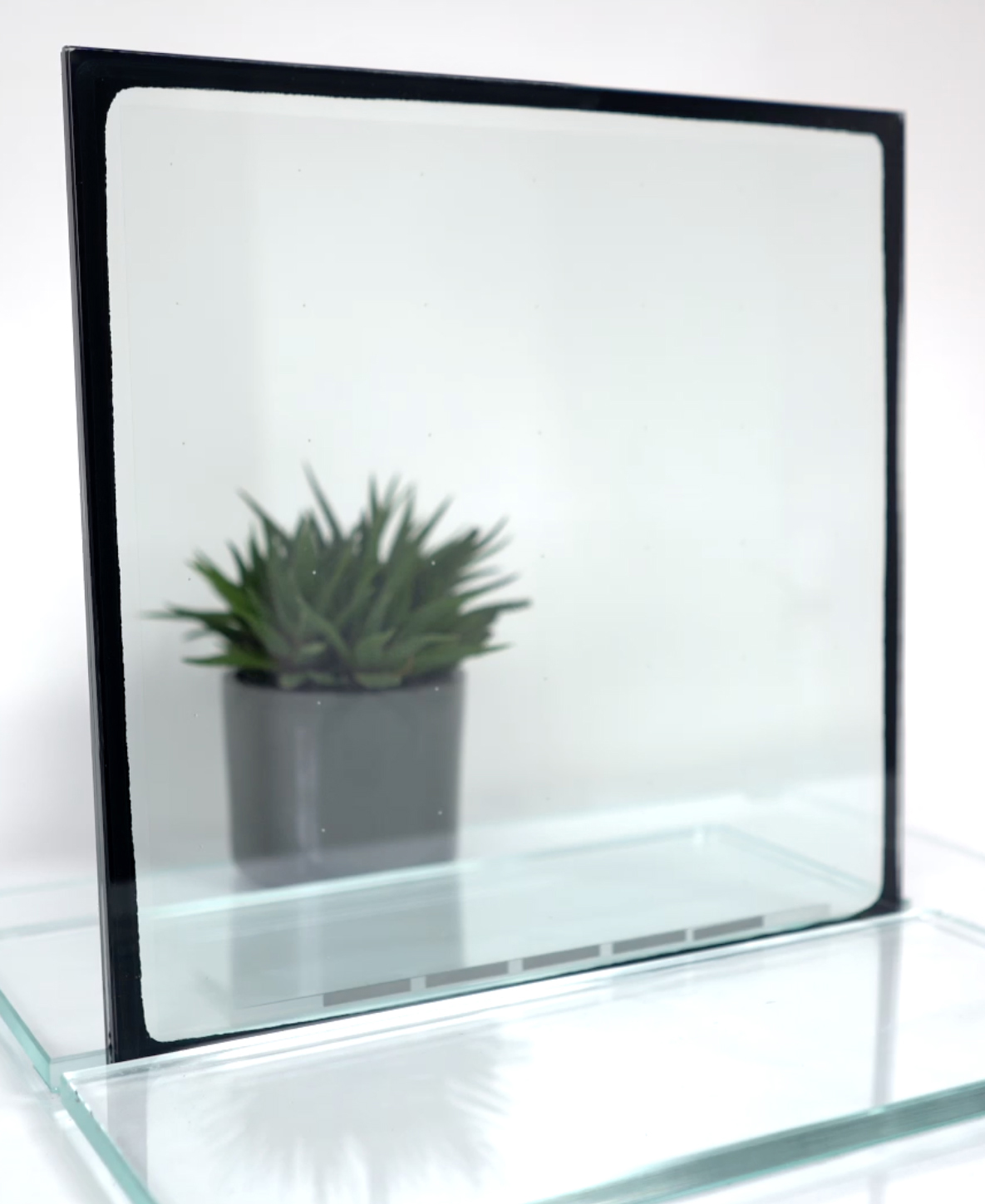PassivGlas™ Linear
PassivGlas™ Linear, is an advanced fenestration technology that involves creating a highly insulating window by enclosing two glass panes with a micro-thin vacuum gap in between. This delivers an improved thermal performance when comparing against a standard A-Rated insulating glass and even gas filled triple glazing. It can be fitted into new or existing timber, aluminium or UPVC frames and can achieve Passive House Standards.
PassivGlas™ Linear, a third generation vacuum insulated glazing (VIG) product, offers a flush surface as there is no evacuation port. Combining this with translucent micro-pillars, it offers architects a thermally efficient and acoustic high performing insulated glass with no visual restrictions.
Light and Energy Performance data
(Calculated by LBNL Windows 7.8.74 based on NFRC 100-2010/EN673, actual performance may slightly vary)
| Product Description | Light Transmittance % LT | g value | Reflectance (external)% | Reflectance (Internal)% | U Value (W/m2k) | Min (mm) | Max (mm) |
| 8.15mm | 80 | 0.56 | 13 | 13 | 0.49 | 200×200* | 1000×2000 |
| 10.15mm | 80 | 0.57 | 13 | 13 | 0.53 | 200×200* | 1500×2500 |
| 12.15mm | 80 | 0.57 | 13 | 13 | 0.51 | 200×200* | 1500×2500** |
** Larger sizes may be available please consult with your local representative.
For single VIG >1000 mm x 2000 mm larger deflection / bending – consider thicker VIG first, if not possible, please consider Hybrid VIG units
Additional:
Shapes
There will be additional costs and the specific requirement of the shape will need to be agreed prior to accepting an order
Leaded
There will be additional costs and the specific requirement of pattern and spot weld etc will need to be agreed prior to accepting an order.
This will add to the lead-time of the glass, as it is a post manufacture process.


PassivGlas™ Linear
Vacuum glazing units that involves creating a highly insulating window by enclosing two glass panes with a micro-thin gap in between.
Frequently Asked Questions
What are vacuum units?
Vacuum Insulated Glazing or VIG is an advanced fenestration type of insulating unit. It consists of two glass panes, like a standard Insulating unit, but rather than the spacer bar and an air gap, VIG’s are separated by a micro vacuum gap, with a glass solder edge seal.
Are they fully tested?
Yes, they are tested to recognised industry standards:
Impact resistance: EN 12150-2 & ANSI Z97.1-37 & EN 12600 & BS356 (recently completed)
Weathering: EN1279-5 & ASTM E546/E2188/E2189
U-Value: ISO8301/EN12667 (Recently UKAS tested) & ASTM C518
Soundproof: ISO 10140-2 (Recently UKAS tested)
Do the standard units use coated glass?
Yes, all PassivGlas™ Linear units incorporate a Low-e single silver toughenable coating.
In order to meet the current Part O regulations, a Low-e double silver coating would be needed to meet the 70/40 requirements. Please check with VGN as to availability and MOQ for this product range.
What is the expected life?
Expected life on the unit is 25+ years due to there being no spacer bar to fail.
Will there be any condensation
Condensation is formed when the air temperature surrounding an object falls below the dew point and changes into a liquid
Internal:
Although condensation will not form on the internal surface of a VIG unit, Vacuum Glazing does not eradicate condensation from the room.
The warmer inner glass will potentially change the rooms cold point.
It is advisable to ensure all rooms have effective ventilation/circulation.
External:
Condensation may form on the external glass surface under certain conditions.
Generally, forms a grid around the micro-pillars.
Will disappear when the outside temperature warms with the morning sun.
It is an indication of how efficiently your windows are at reducing thermal loss.
Condensation between glasses:
An indication that the Vacuum has been lost.
Consult your supplier to confirm course of action.






